Pilatus Bahnen
The steepest cogwheel railway in the world runs on Westermo technology
Download story as PDF - English
Download story as PDF - German
A highly reliable Ethernet data network is essential for intelligent and automated transportation systems such as Pilatus Railways'.
Over 130 years ago, an outstanding pioneering achievement was made by building what is still the steepest cogwheel railway in the world. After only two years of construction, the railway was put into operation in 1889 using the simplest of tools and the greatest amount of physical effort. As the train climbs the path from Alpnachstad to Pilatus Kulm meter by meter, it passes flowering Alpine meadows, striking rock formations, and snowfields. Pilatus-Bahnen's pioneering spirit still roars at Pilatus-Bahnen today. It has become one of Switzerland's most successful family destinations. As a result of the large crowds, the steepest cogwheel railway needed to be equipped with larger and faster rail vehicles with the latest technology. Reliable and robust data network technology from Westermo was chosen to support the operation of these brand-new vehicles.
Reliable data communication
In the original train cars, the entire train control system was based on mechanical and electromechanical control elements. The new trains will bring more guests up the mountain faster. To achieve this, a modern, electronic train control system from Actemium Schweiz AG LeitTec (Actemium) was installed. In order to establish a connection between trackside control units and moving trains, reliable wireless data communication was essential.
A highly available data network is essential for automatic train operation (ATO) and communication-based train control, such as the PbS (Position Based Signaling) developed by Actemium, used on Pilatus-Bahnen's cogwheel railway. With exceptionally high demands on the reliability of the network, a wireless network solution developed especially for train-to-ground communication was required.
Westermo was chosen for the project by Pilatus and Actemium. Westermo's extensive experience in high-availability data networks for railway systems and its broad range of robust data communication products that meet the required reliability and availability were critical factors in this decision.
"We chose Westermo because the collaboration was constructive and very engaging right from the start of our discussions. A project like this one has never been built before and is essentially a prototype. To be able to accomplish this project, we need partners like Westermo who actively contribute their know-how and support us with planning. Ongoing project changes were always supported and professionally implemented by Westermo. We could count on them at all times." Patrick Blaser, Operations Manager and Member of the Executive Board at Pilatus.

A wild Ibex goat at Mount Pilatus. Image: © PILATUS-BAHNEN AG
Secure data network
Westermo engineers designed, delivered, and installed the Pilatus data network directly on the mountain in close collaboration with Actemium. Based on a redundant Ethernet ring architecture, the network consists of wireless and wired Westermo devices designed for maximum reliability.
The network had to balance two critical requirements. While high technical requirements had to be met, infrastructure costs had to be optimized to the greatest extent possible, at the same time. Network security also played a very significant role in the planning. The ICT minimum standard, the Swiss government's cyber security recommendations for critical infrastructures, was also taken into account. It was important to include network security in the planning process from the beginning and to implement it gradually. Through meticulous planning, an encrypted data network with several security zones, monitoring and surveillance systems was created.
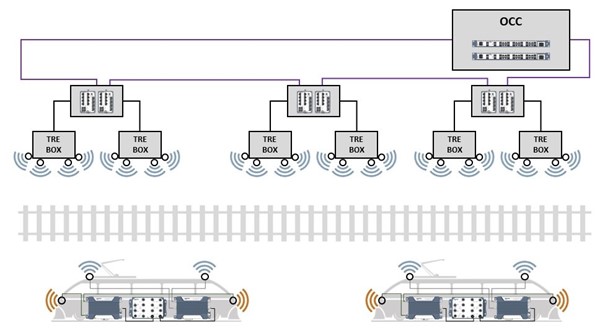
"Train-to-ground" Ethernet architecture and rear-end detection of trains.
FRNT (Fast Recovery Network Topology), Westermo's own ring protocol for high-availability Ethernet networks provided the network redundancy ring on the link side. The ring architecture ensures data transfer via other paths in the unlikely event of a device or network link failure. Furthermore, to ensure that the network can be operated securely and is protected from the outside, a number of security functions such as data encryption, port security, active firewalls and other mechanisms for a secure data network were already taken into account in the concept and later implemented.
Infrastructure access points Ibex-RT-370 were installed trackside to provide WLAN connection to the vehicles, along with redundant routing switches with firewall functionality in the stations. The onboard network is based on Viper-212A managed routing switches and Ibex-RT-320 clients that communicate over Wi-Fi with the trackside access points, so-called train-to-ground communication. This network setup ensures reliable communication between the trains and the control system.
In addition, a collision warning system between the trains was implemented using Westermo wireless technology. A WLAN connection is automatically established between two vehicles when they approach each other. This connection allows the steering systems to exchange data, enabling them to travel virtually in tandem and avoid collisions.
Trackside Radio Equipment Box for trackside Wi-Fi equipment
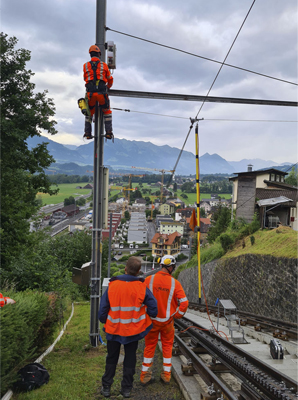
The Trackside Radio Equipment Box (TRE Box) being installed on Mount Pilatus.
There is often over 10m of snow on the Pilatus summit in winter. In order to protect the infrastructure from these masses of snow and water, it is partially dismantled in autumn and reassembled in spring. In order to simplify and streamline this process, a special "Trackside Radio Equipment Box" was developed and implemented by Westermo, containing WLAN access points, antennas, and power splitters. These TRE boxes have been delivered to Pilatus Railways fully wired, tested and configured, allowing for cost and time savings during the installation and commissioning. Thanks to a sophisticated assembly and disassembly system, the boxes can be easily dismantled in the autumn and reassembled in the spring. This also ensures that the antennas mounted on the TRE box are correctly aligned again after the reassembly of the box.
Mount Pilatus is an extremely unique place, with its highest point over 2000 meters above sea level, exposed to extreme geological weather conditions. To make the entire installation successful, all companies involved had to work closely together and find solutions. Occasionally, work could not be carried out as planned due to geological or weather conditions, requiring a high degree of collaboration and flexibility.
Peter Tschan, Project Manager at Actemium, a key participant in the project, states:
"Throughout the project process, we were able to rely on Westermo and benefit from their expertise in secure, industrial networks and WLAN systems. Together, we developed and edited network concepts with integrated cyber-security. Additionally, Westermo was on-site during commissioning to support us. This saved us a lot of time and money. We will also rely on Westermo for future projects since reliable data networks are the foundation of our success."
The commissioning of the trackside and onboard data networks began in June 2022.
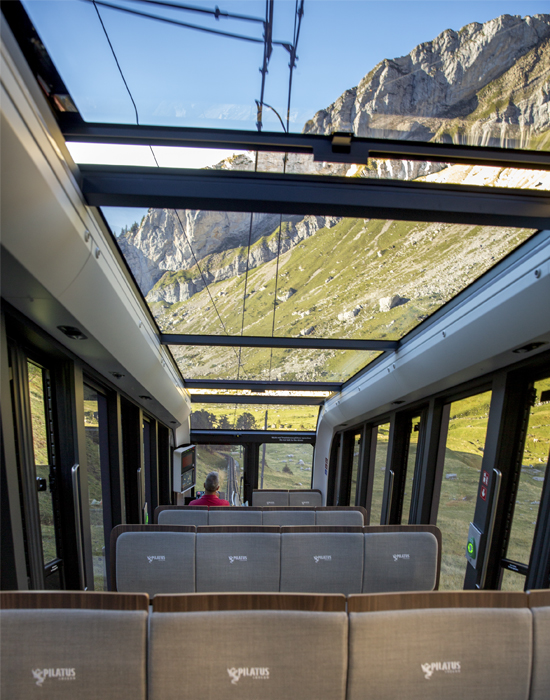
View from inside a train as it’s heading toward the top of Mount Pilatus Image: © PILATUS-BAHNEN AG
See also
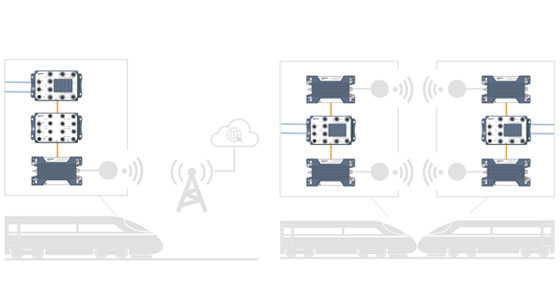
Wireless solutions for train communication
Remove the need for network cables. Westermo offers a complete range of wireless data communication solutions for train to ground, wireless inter-carriage links, passenger Wi-Fi applications and remote access over the mobile network.
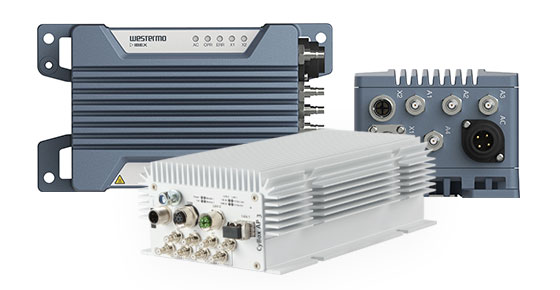
Teolliset langattomat LAN (WLAN) laitteet
Kompaktit ja monipuoliset WLAN-tukiasemat, sillat, clientit luotettavaan langattomaan siirtoon äärimmäisissä olosuhteissa.
Carl de Bruin
International sales

Jos tarvitset asiakastukea, ole hyvä ja käytä tukilomaketta
